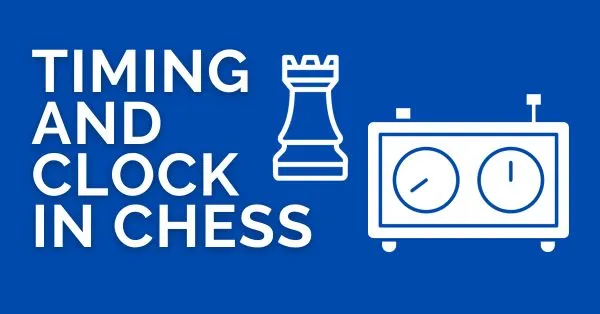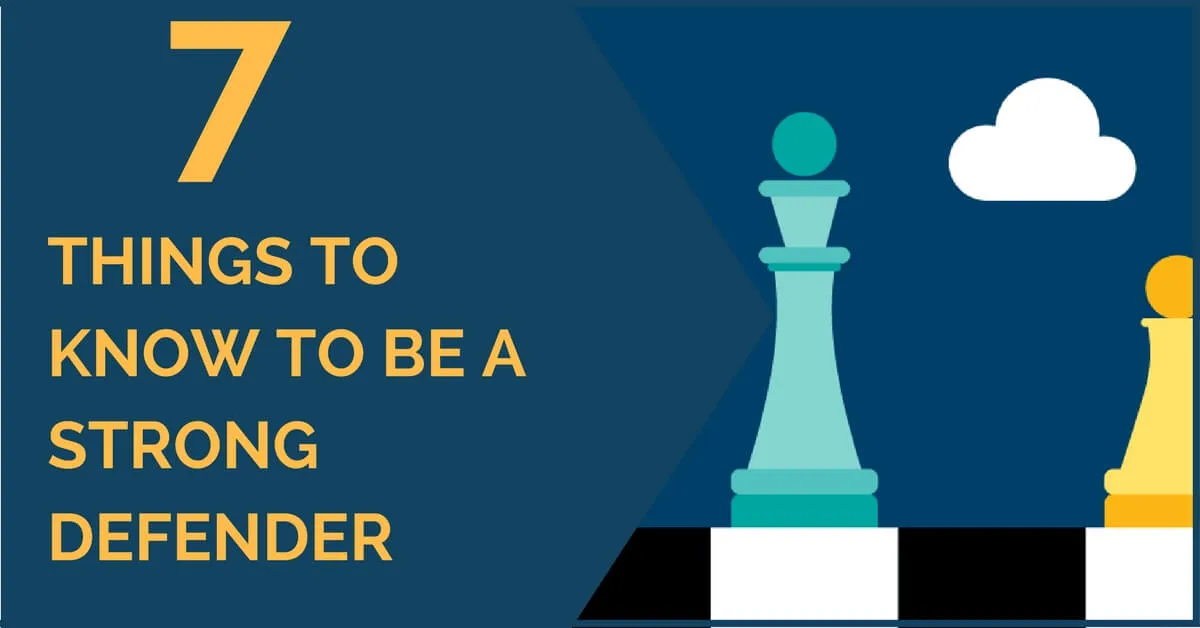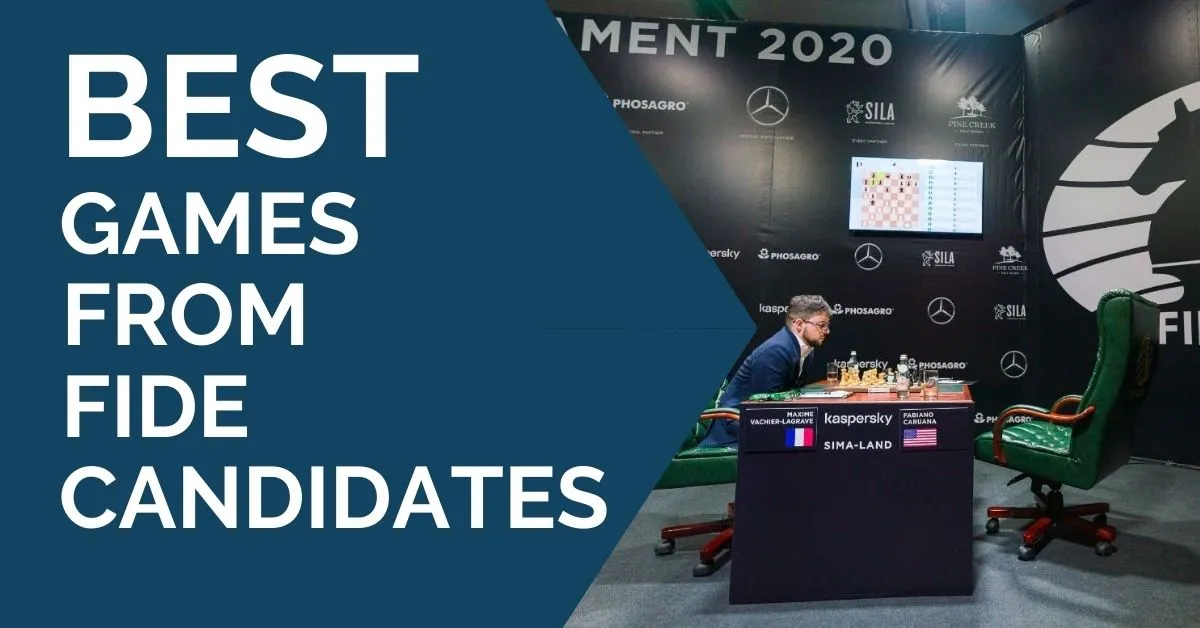Timing and Clock in Chess

Time constraints are part of a chess game. The timing in chess for each move can vary wildly. It can range from a few seconds to a couple of days per move. The way we measure time in chess is through a clock. The clock in chess can be analog or digital. It can also be a physical clock or a virtual one (eg chess clocks online).
With such a huge variety in timing in chess, it is important to categorize and label them.
Clocks and Time Controls in Chess
Clocks and time control regulate one of the most important aspects of a game. It is the time spent and speed of the game.
The way chess clock work is as follows:
We will discuss the most basic clock and timing in chess. The chess clock consists of two timers. One for each player. Black starts the clock first and now white’s time starts. White player ‘presses the clock’ after his move and this does two things. First, it pauses White’s timer and then starts Black’s timer. The players repeat this process to mark time.
Time controls regulate the total allowed time per game or move. There are various time controls suitable for different scenarios. We will discuss time controls in depth below.
Why Need Clocks in Chess?
A chess clock serves many functions. They are an integral part of playing the game. Chess clocks are just as important as the board and pieces. They serve multiplier functions.
Preventing an Infinite game: Clocks provide a finite amount of time for each player to finish the game. If a player fails to do so then they lose the game.
They ensure Fairness: Timing a chess game with clocks makes sure that there is a tool apart from the human senses to measure time. This ensures fairness and equality in the game.
Modern function: The advanced digital chess clocks in use today do a lot more than measure time. One important function is that they count the number of moves as well. This is important in the scenarios where a player claims a draw.
What Are Time Controls in Chess?
Time control for a game determines how much time a player gets for the entire game. Chess games with time controls are generally categorized into three:
- Classical Time Control
- Rapid Time Control
- Blitz Time Control
These are the standard chess timings used in FIDE and National Federation-rated tournaments.
When it comes to online chess clocks the variety of time controls increases. Apart from Blitz, Rapid, and Classical. We have the bullet time control, Hyperbullet, and Ultrabullet time control (which is a game with an insane 15 seconds per player from the start)
Time Controls in Classical or Standard Game
FIDE Time Controls:
FIDE sets the standard for international chess tournaments. The classical chess clock setting is:
90 minutes for the first 40 moves followed by an additional 30 minutes for the rest of the game with an increment of 30 seconds per move starting from move one.
This is used in mostly strong Open events with Grandmasters or closed tournaments with Master-level players.
A more common standard timing in chess for amateur players is 90 minutes with an increment of 30 seconds per move from move one.
Time Controls in Rapid Game
The Rapid Time control is faster than classical time control. There are many standard rapid chess timings.
FIDE Time Controls:
The two most common Rapid time controls used in FIDE tournaments are 25 min +10 sec and 15 mins+10 sec.
Anything above the 30-minute mark is a standard time control in a chess game.
Time Controls in Blitz Game
Blitz time control is an even faster-paced variant of the game. This game timing is the fastest possible chess time control in FIDE events.
Blitz time control is anything between 5 minutes and 3 minutes per player with possible additional increments.
FIDE Time Controls:
Here also we have two commonly accepted standard Blitz time controls. One is the 5+3 game timing: Each player has 5 minutes for the entire game, with an increment of 3 seconds added after each move. The next one is 3+2.
Time Controls in Bullet Game
Bullet is not an officially accepted time control format. FIDE or National Federations don’t recognize these timings in chess.
Bullet is played exclusively on online servers. This timing in chess starts from 2 minutes and below per player.
The most famous Bullet time control is the 1+0 and 1+1. These are fast time controls and requires other skills apart from chess skill.
How Do You Select A Time Control?
Selecting chess game timing depends on your preferences, skill level, and how much time you’re willing to invest in a game. Here are some factors to consider when choosing a time control for a chess game:
A general rule of thumb is that the lower your chess skill the slower the time control should be. This is however solely based on if you focus on improving your game. If your goal is enjoyment then you can play any timing in chess you wish.
- Playing Style:
Deliberate Thinker: If you prefer taking your time to calculate deeply and make plans, longer time controls are suitable.
Intuitive Player: If you rely on patterns, and intuition to find smart chess moves, shorter time controls like blitz or bullet might suit you.
- Preference for Intensity:
Some players enjoy the fast-paced nature of blitz or bullet, while others prefer the more thoughtful style of classical chess timing.
Here we also need to talk about increments. Some players get into perennial time trouble. This is usually because of bad time management and perfectionism.
Such players can relieve some of the pressure by playing games in increments.
Online vs. Over-the-Board (OTB) Play
Online platforms offer a wide range of time controls, while rated OTB games follow specific tournament time control regulations.
In an OTB Tournament, the time control is known and you have to play all new chess games in that time control. In online servers, you can play any chess game timing you wish.
Terms Related to Chess Clock and Time Control
- Increment/Fischer Bonus
It is the time added to a player’s clock after they make a move. Let’s say we have a game of 3+2. In this time control the base time is 3 minutes and 2 seconds increments to the chess watch for every move the player makes.
- Bronstein Delay
In this time control, a delay of a specified amount of time is added after each move. For example, if the delay is 3 seconds and your clock is at 5:10.
After you make your move the chess watch will pause at 5:10 for 3 seconds and then resume the timer. If you make a move within a 3-second delay then the timer does not change.
- Sudden Death
A Sudden Death time control is where the game is played without any increments. For example, the chess game timings of 10+0 or 5+0.
- Flag Falls
‘Flag Falls’ is a term where it means that you have run out of your base time. When the ‘Flag falls’ your timer would read 0:00.
This term has its origins in the antique chess clock where a physically embedded flag in the clock falls when a player runs out of time.
History of Chess Clocks
Early chess games used to have no clocks. This practically meant that players could use offhanded tactics to beat each other. The most common problem was stalling and exhausting the other player. To combat this the first chess clock was introduced.
The Sand clock had a simple design. The falling sand measures the chess timing. Although it wasn’t accurate but forced the players to think about time management.
The first iteration of the modern chess clock was invented by Thomas Bright Wilson of the Manchester Chess Club. Initially, the chess clock was only used in high-profile tournaments.
In the late 1960s, the electronics revolution was in full swing. Miniaturized electronics were becoming more and more common. In 1973 an engineering student from Cornell University invented the first digital clock. This gave rise to a whole new world of possibilities.
Types of Chess Clocks
There are two types of chess clocks. Analog and Digital. Nowadays analog clocks are phased out from tournament practice. Modern chess tournament rules suggest using the digital clock.
The official FIDE clock is the digital clock. Let’s examine the difference between an Analog and a Digital Clock.
- Analog Clocks:
Analog clocks have physical and mechanical movements. They windable dials, one for each player, which slowly count down the time.
Analog Clocks have fewer features compared to digital clocks. They don’t have functions like delay or increment.
- Digital Clocks:
Digital clocks use electronic components to keep track of time. They have digital displays that show the remaining time in a clear and easily readable format.
They offer a wide range of features including various time controls different increment and delay options, and customization settings.
A major advantage of digital clocks is that they are highly accurate.
FAQ
Is it worth buying a chess clock?
A chess clock is a great investment if you plan on playing tournaments regularly. They are compulsory in tournaments and provide on-demand timekeeping.
Which clock should I buy? Analog or digital?
Analog clocks are for hobbyists and the digital clock is the standard clock that we use in tournaments. You can choose according to your preference for play.
What clocks do they use in chess tournaments?
Chess tournaments use digital clocks. These clocks are more precise and convenient to use than analog clocks.
You also might like How to Master Bullet Chess: The Insider Tips as well as How to Learn Chess Openings? The Complete Guide.










Comments: